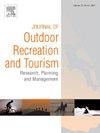优化保护区过度旅游的方法
IF 4.4
3区 管理学
Q1 HOSPITALITY, LEISURE, SPORT & TOURISM
Journal of Outdoor Recreation and Tourism-Research Planning and Management
Pub Date : 2025-02-16
DOI:10.1016/j.jort.2025.100859
引用次数: 0
摘要
近年来,保护区越来越受欢迎,这可归因于新冠肺炎疫情后旅游业的重新开放,以及保护区户外活动需求的不断增长。然而,许多保护区正面临着过度旅游的问题,这对自然、居民、区域经济和游客都产生了负面影响。本研究旨在通过开发和验证一种名为“过度旅游优化方法”的新颖方法来解决保护区内的过度旅游问题。该方法包括过度旅游的时空诊断和有效管理措施的实施。该研究利用2017年至2023年的每小时游客数据,以及问卷调查数据来诊断游客和居民的过度旅游。管理过度旅游的行动是通过涉及保护区管理者、科学家、外部专家和公众意见的参与性决策过程制定的。这项研究是在波兰的Stołowe国家公园进行的。实施这种方法导致了游客流量的分散,减少了中午前后的平均和高峰游客数量,而增加了上午、下午晚些时候和晚上的游客数量。这些措施通过参与性决策过程在社会上广受欢迎。游客和居民反馈在过度旅游管理的社会参与方面发挥了至关重要的作用,强调了这些利益相关者在决策过程中的重要性。该方法应用的多功能性取决于其针对每个保护区的特定景观、访问规则和旅游步道网络实施各种行动的能力。管理意义过度旅游优化方法代表了一种新的过度旅游分析方法,保护区管理者可以使用该方法来制定量身定制的策略,以优化其区域内的过度旅游。在诊断过度旅游时,保护区管理者组成一个利益相关者团队,以获得每个群体的观点。任何改变都应该在全面理解的基础上进行。保护区管理者可以积极地让包括当地社区在内的所有利益相关者参与决策过程,从而获得公众对实施过度旅游优化措施的接受度。本文章由计算机程序翻译,如有差异,请以英文原文为准。
A method for overtourism optimisation for protected areas
The increasing popularity of protected areas in recent years can be attributed to the reopening of tourism after the Covid-19 pandemic and the growing demand for outdoor activities in such areas. However, many protected areas are facing issues of overtourism, which negatively impacts nature, residents, the regional economy, and visitors alike. This study aims to address overtourism within protected areas through the development and validation of a new and original method known as the Method of Overtourism Optimization. The method involves the spatio-temporal diagnosis of overtourism and the implementation of actions to manage it effectively. The research utilized hourly visitor data spanning from 2017 to 2023, along with questionnaire survey data to diagnose overtourism by both visitors and residents. Actions to manage overtourism were developed through a participatory decision-making process involving protected areas managers, scientists, external experts, and public input. The research was conducted in the Stołowe Mountains National Park in Poland. Implementing the method resulted in a dispersion of visitor flow, reducing both average and peak visitor numbers around noon while increasing visitors during morning, late afternoon, and evening hours. These measures were well-received socially through participatory decision-making processes. Visitor and resident feedback played a crucial role in the social participation aspect of overtourism management, emphasizing the importance of these stakeholders in decision-making processes. The versatility of the method's application depends on its ability to implement various actions tailored to the specific landscape, access rules, and tourist trail network of each protected areas.
Management implications
The Method of Overtourism Optimizing represents a new approach to overtourism analysis that protected area managers can use to create tailored strategies for optimizing overtourism in their area.
When diagnosing overtourism, protected area managers form a team of stakeholders to gain the perspectives of each group. Any change should be made with this comprehensive understanding.
Protected area managers can actively involve all stakeholders, including the local community, in the decision-making process, thereby gaining public acceptance for the implemented overtourism optimization measures.
求助全文
通过发布文献求助,成功后即可免费获取论文全文。
去求助
来源期刊

Journal of Outdoor Recreation and Tourism-Research Planning and Management
HOSPITALITY, LEISURE, SPORT & TOURISM-
CiteScore
6.70
自引率
5.30%
发文量
84
期刊介绍:
Journal of Outdoor Recreation and Tourism offers a dedicated outlet for research relevant to social sciences and natural resources. The journal publishes peer reviewed original research on all aspects of outdoor recreation planning and management, covering the entire spectrum of settings from wilderness to urban outdoor recreation opportunities. It also focuses on new products and findings in nature based tourism and park management. JORT is an interdisciplinary and transdisciplinary journal, articles may focus on any aspect of theory, method, or concept of outdoor recreation research, planning or management, and interdisciplinary work is especially welcome, and may be of a theoretical and/or a case study nature. Depending on the topic of investigation, articles may be positioned within one academic discipline, or draw from several disciplines in an integrative manner, with overarching relevance to social sciences and natural resources. JORT is international in scope and attracts scholars from all reaches of the world to facilitate the exchange of ideas. As such, the journal enhances understanding of scientific knowledge, empirical results, and practitioners'' needs. Therefore in JORT each article is accompanied by an executive summary, written by the editors or authors, highlighting the planning and management relevant aspects of the article.
 求助内容:
求助内容: 应助结果提醒方式:
应助结果提醒方式:


